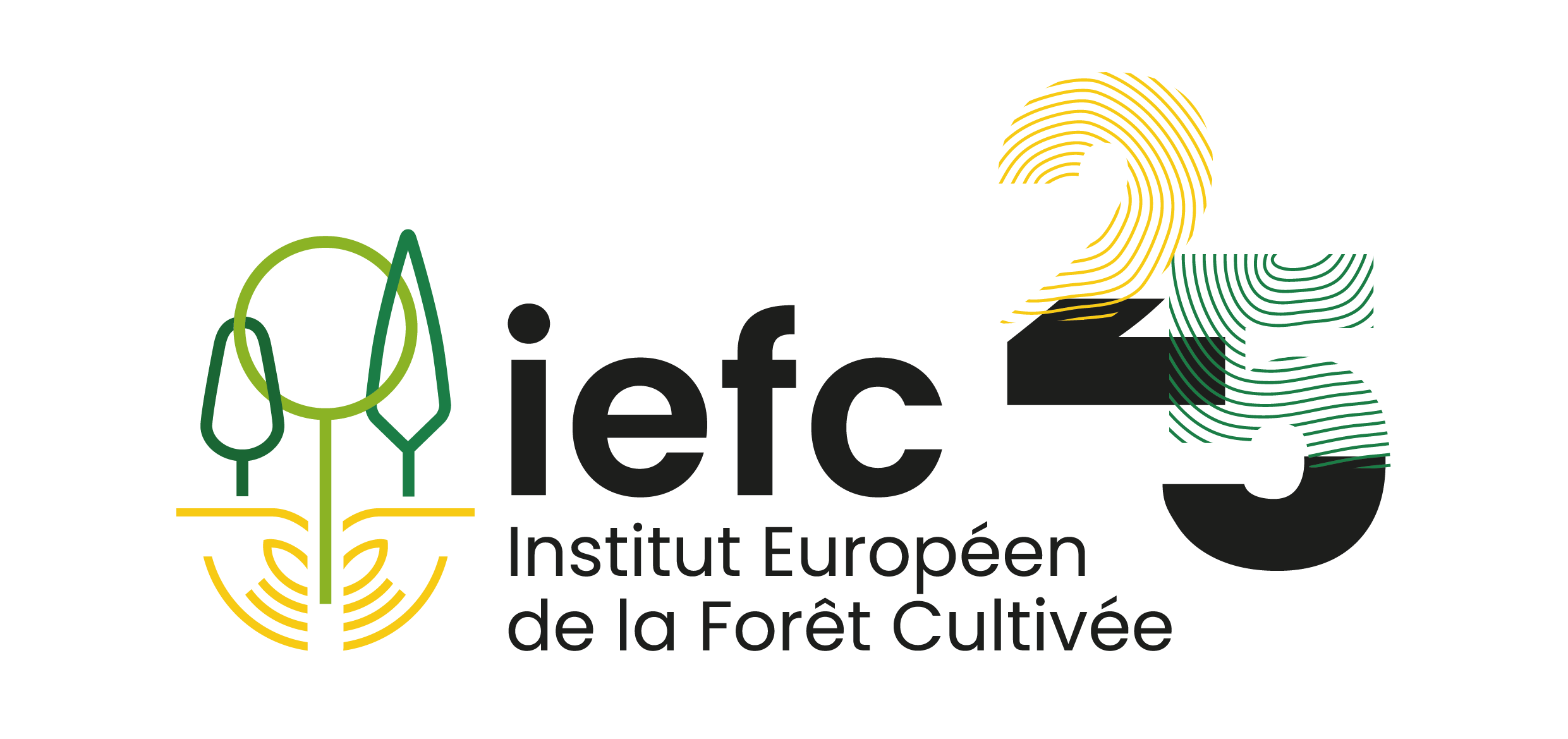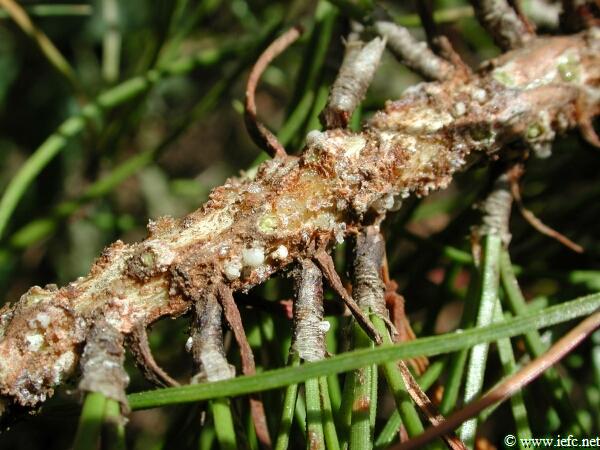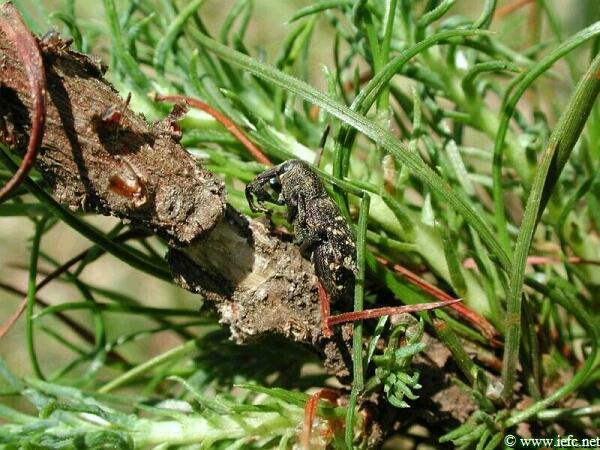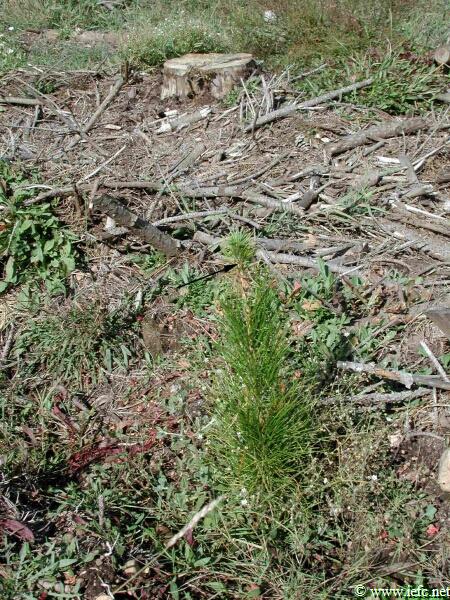Large pine weevil
Hylobius abietis (L) (Coleoptera, Curculionidae)
Host tree
All conifers, particularly pine (Pinus), Douglas fir (Pseudotsuga), spruce (Picea) and larch (Larix). Also occasionally found on broadleaved trees.
Identification
- In young trees or seedlings presence of debarked areas on stem and branches associated with resin exudation (Photo 1).
- Often wilting and death of plant parts above the debarked area (Photo 2).
- In spring and late summer the rather big adult weevils can be found on the trees, especially on cloudy days. They are black with crème spots, 8 to 14 mm long and have a large snout with the antennae implanted at the end (Photo 3).
- On pine, other weevils can be found: Pissodes spp. and Brachyderes lusitanicus. In Pissodes spp. the antennae are attached about halfway along the snout. These weevils are smaller (5-11 mm) than the large pine weevil and are usually brown-coloredwith different crème markings. Brachyderes lusitanicus is also smaller (7-11 mm) and has an oblong, black body. The snout is much shorter and wider and the antennae are inserted at the end.
Damage
- Large pine weevil adults can cause severe damage in young plantations and seedlings.
- Feeding activity of adults on stem bark can cause girdling and thereby death of the young tree.
- Mortality occurs mainly during the first two years after plantation and most important damage occurs early in the first growing season.
- Surviving trees show a decreased growth.
- Damage is more intense in small and slow-growing plants.
Biology
- A complete generation (egg to adult) takes one year in southern Europe, and up to four years in the North.
- Adults overwinter in stumps, felled trees and soil litter.
- Adults feed on thin bark of seedlings and young trees in April-May and August-September, leading to tree mortality.
- Eggs are laid at the base of stumps and in logs, where larvae can develop.
- Population density is very variable and depending on the availability of breeding and overwintering sites (fresh stumps and logs).
Risk factors
- Nurseries or new plantations near felled sites, especially sites damaged by fires, are more prone to attacks, mainly because adults breed and overwinter in stumps.
- Small-sized seedlings are less able to sustain feeding damage.
- Seedlings/plants under water stress, damaged by rough handling or inappropriate conditions during storage or transport are more susceptible to attacks.
Distribution
- Present in nearly all European countries, also from China to Japan.
Pest management
Monitoring
- Observation of the number of attacked trees and level of damage.
Preventive measurements
- Remove material suitable for egg laying, such as fresh stumps and logs.
- In areas near to felled sites wait a couple of years before planting, allowing the population of Hylobius to use up all their resources and reduce in size.
- Favour small felling coups over large clear-cuttings.
- Plant after soil scarification because weevils avoid remaining in areas with pure mineral soil.
- Use of log traps to attract adults, destroying them after being colonized.
- In France, carbosulfan can be applied in the planting hole
Curative control
- In several European countries, various insecticides are registered for use on young plants, e.g. permethrin or deltamethrin.
Climate change
- Rising temperatures under climate change are likely to fasten the weevil life cycle and to modify the seasonal timing of adult activity. However, damage by H. abietis is not particularly related to specific climatic or tree conditions. Since they reproduce on stumps following clearcuts, wind and fire damage may increase the risk of outbreak.




